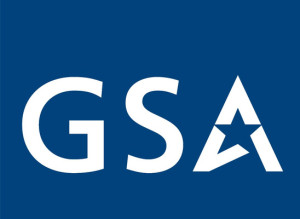
Alliant 2 and other billion-dollar contracts worth watching this fall
After almost nine months of no news, GSA asked vendors bidding on the Alliant 2 GWAC to guarantee their bids through Dec. 31.
I got a question a few weeks ago from a friend in industry: “What are you hearing about the Alliant 2 awards?”
The fact is I hadn’t heard anything over the last year about the status of the $65 billion multiple award IT services governmentwide acquisition contract (GWAC) since the initial protests were decided.
When I got around to checking the General Services Administration’s Interact site — which, by the way, has been an unheralded success story in the often convoluted and complicated world of industry-government communication — and low-and-behold, there was some news.
GSA has asked the bidders to extend their offers through Dec. 31.
OK, it’s not “news alert” worthy news, but still, it provides an important marker for where the GWAC stands.
The FedBizOpps notice stated, “In an abundance of caution and to protect against the Alliant 2 (and the Alliant 2 Small Business) acceptance period closing prior to making award.”
John Cavadias, the GSA GWAC contracting officer, said in an email to Federal News Radio Alliant 2 remains on schedule for award prior to winter 2017.
“GSA still intends to make awards based on initial proposals without discussions, it is appropriate to take this precautionary measure should unforeseen delays arise as we enter the new fiscal year,” he said.
Lisa Pafe, vice president of Lohfeld Consulting Group, follows Alliant 2 closely. She said GSA has reached out to some contractors, asking for more documents or clarification on their bids.
“What that means is hard to say for sure. Does it mean these vendors passed the first test and GSA is now asking for additional documents?” Pafe said in an interview with Federal News Radio. “Other than that, everyone is just waiting for the awards. Since GSA is going to rank offers based on self-scoring, I think it’s taking a little longer for them to do the verifications.”
Pafe said she consulted with several contractors on their bids so she knows just how long it takes to review and finalize the self-scoring and bid documents.
Aliya Moyers, a research analyst on the civilian team for Deltek, also is following the Alliant 2 GWAC closely. She said vendors initially expected awards this summer, but a GSA blog earlier this summer confirmed the timeline has been pushed a little to the right.
“With the Alliant vehicle still active and set to expire February 2019, there will be an overlap of the two contracts. This may be the first time two active contracts are open at the same time,” Moyers said in an interview. “One of the main reasons for GSA awarding Alliant 2 earlier is a lot of clients have task orders with a period of performance for 10 years. Right now under Alliant, GSA is not able to help those clients because the latest any contract could run would be 2024 — five years after expiration of Alliant.”
Alliant has been a popular contract for GSA’s agency customers and vendors alike.
GSA’s GWAC Dashboard says agencies have spent $3.2 billion through Alliant and Alliant small business so far in fiscal 2017. Alliant has seen significant growth over the last three years. In 2014, agencies spent about $3.8 billion. A year later, that grew to $4.1 billion, and two years later, Alliant received almost $4.7 billion in sales.
The Defense Department remains the biggest customer, obligating $3.8 billion since 2009 with the Homeland Security Department being the largest civilian user with $1.99 billion and the State Department spending $1.9 billion.
Additionally, GSA and the Homeland Security Department decided to use Alliant and Alliant 2 for all future task orders under the Continuous Diagnostics and Mitigation (CDM) cyber program.
GSA and DHS expect to add another $2.75 billon-to-$3.4 billion through the new CDM task orders called “DEFEND.” Sources tell Federal News Radio GSA and DHS will release the first task orders under DEFEND as soon as this week.
“Alliant is a well-liked contract, and many companies have been able to grow their businesses by winning major task orders,” Pafe said. “I think the biggest concerns with Alliant 2 will be for the mid-tier vendors, who were successful on Alliant small business so they couldn’t bid on Alliant 2 small business. They are the ones that are most anxiously waiting to hear about awards. I saw companies submitting bids that seemed to have no chance, but if GSA eliminates a number of bidders because of minor compliance issues, like they did with the Human Capital and Training Solutions (HCaTS) awards, then maybe those firms will make it to a spot where GSA has to review their bids.”
While a lot of the federal technology community is watching and waiting for Alliant 2 awards, there are several other large-dollar and high-profile contracts that are on many vendors’ radar.
Based on interviews with Deltek and Lohfeld experts, here are a sampling of those big deals that are expected this fall and winter:
- Speaking of GSA, Deltek’s Moyers said many vendors are watching two other upcoming awards: VETS 2 GWAC and pool 2 of the OASIS small business professional service multiple award contract. She said GSA received about 175 proposals for the follow-on to successful VETS contract, which gives agencies access to service disabled veteran-owned small businesses who provide IT services. The awards to the $5 billion follow-on contract are expected before Dec. 31, which would complete an 18-month recompete process — aside from the always-expected bid protests that come with any large scale vehicle. Agency use of the VETS GWAC has been on a downward slope since 2011, when total sales reached more than $385 million. In 2016, agencies spent $127 million, about $10 million less than the year before, according to GSA’s GWAC Dashboard. Moyers said GSA’s OASIS small business Pool 2 awards should also happen before the end of the fiscal year. Under Pool 2, GSA expects to add 31 more contractors to provide a host of professional services, including certified public accountants, tax preparation, payroll and research and development in the social sciences and humanities sectors. Moyers said Pool 2 had the lowest number of contract holders currently so GSA wants to bring in enough new vendors to ensure enough competition on task orders.
- The Air Force has two huge contracts worth watching. Corrie Plaugher, a research analyst covering the Air Force for Deltek, said the AFCAP 5 request for proposals is coming in summer 2018. AFCAP has a ceiling of $6.4 billion to provide civil engineer capabilities and logistics for emergencies and in other urgent situations. Plaugher said the Air Force is expected to make awards in March 2020. AFCAP 4 has a ceiling of $5 billion, but only has had $115 million in spending so far, with Dyncorp winning 36 percent of the dollars. The second big contract is the Air Force’s Small Business Enterprise Applications Solutions vehicle, which is being separated from the NetCents 2 contract. Plaugher said Deltek expects the solicitation to come out in August with an award by January. Beth Wingate, president of Lohfeld Consulting Group, said the value of SBEAS could be as much as $13.3 billion over 10 years. “While the SBEAS contract is specifically established within the Business Enterprise System (BES) Directorate, this contract vehicle may be used by all other agencies that support an Air Force requirement,” Wingate said. “The scope of this ID/IQ includes the comprehensive suite of IT services and IT solutions to support IT systems and software development in a variety of environments and infrastructures. Additional IT services include, but are not limited to, documentation, operations, deployment, cybersecurity, configuration management, training, commercial-off-the-shelf (COTS) product management and utilization, technology refresh, data and information services, information display services and business analysis for IT programs.”
- The Army’s biggest opportunity for 2018 is LOGCap 5, a logistics civil augmentation program where vendors will provide a host of facilities support services outside the continental United States, ranging from food and beverage services to firefighting and protection services to janitorial services. Stephanie Antona, a research analyst covering the Army for Deltek, said LOGCAP 5 has an $82 billion ceiling over 10 years. The RFP is expected in October with an award by June 2018. “This is probably the biggest opportunity we have in our database in terms of dollar value,” she said.
- Outside of the services, Deltek’s Warren Lane, a research analyst covering DoD’s non-combatant agencies, said the Defense Technical Information Center’s Information Analysis Centers RFP is worth watching. It’s a $28 billion multiple award contract for research and development support service. Lane said a final RFP is expected in early October, with as many as 29 awards by Sept. 30. Lane said under IAC, DTIC expects to make 15 awards under the full and open pool, 10 awards under the small business-only pool and four awards under the third pool for level-3 bio lab support. “This is a big follow on to 40 different contracts. The government is consolidating from three different task orders around things like cybersecurity, defense systems and homeland defense with each ranging from 10-to-15 different incumbents and some overlap that serve on all three,” Lane said.
- The Homeland Security Department has one of the most watched non-DoD related procurements. Pafe said the Customs and Border Protection directorate is consolidating five contracts into its new $500 million data center support services (DCSS) vehicle. DHS’ Procurement Innovation Lab (PIL) is running the acquisition for CBP, which also includes moving apps to the cloud and a host of other IT services. Pafe said it’s been far from smooth so far. “This procurement has dragged on and on. It took a long time to notify vendors about whether they made it to phase 2, which was an advisory notice based on oral presentation of company capabilities,” she said. Pafe said Lohfeld estimates five companies made it into phase 2, but that doesn’t mean only five vendors bid. Pafe said even if a contractor didn’t make qualify for phase 2, they still could submit a bid. The PIL set Aug. 28 as a deadline for proposals for DCSS, and Pafe said awards are expected within a month or so.
Return to the Reporter’s Notebook
Copyright © 2025 Federal News Network. All rights reserved. This website is not intended for users located within the European Economic Area.
Jason Miller is executive editor of Federal News Network and directs news coverage on the people, policy and programs of the federal government.
Follow @jmillerWFED
Related Stories





